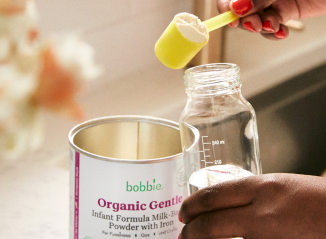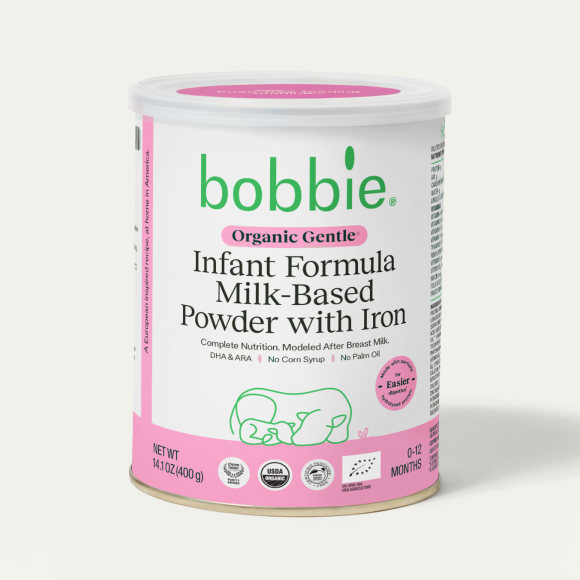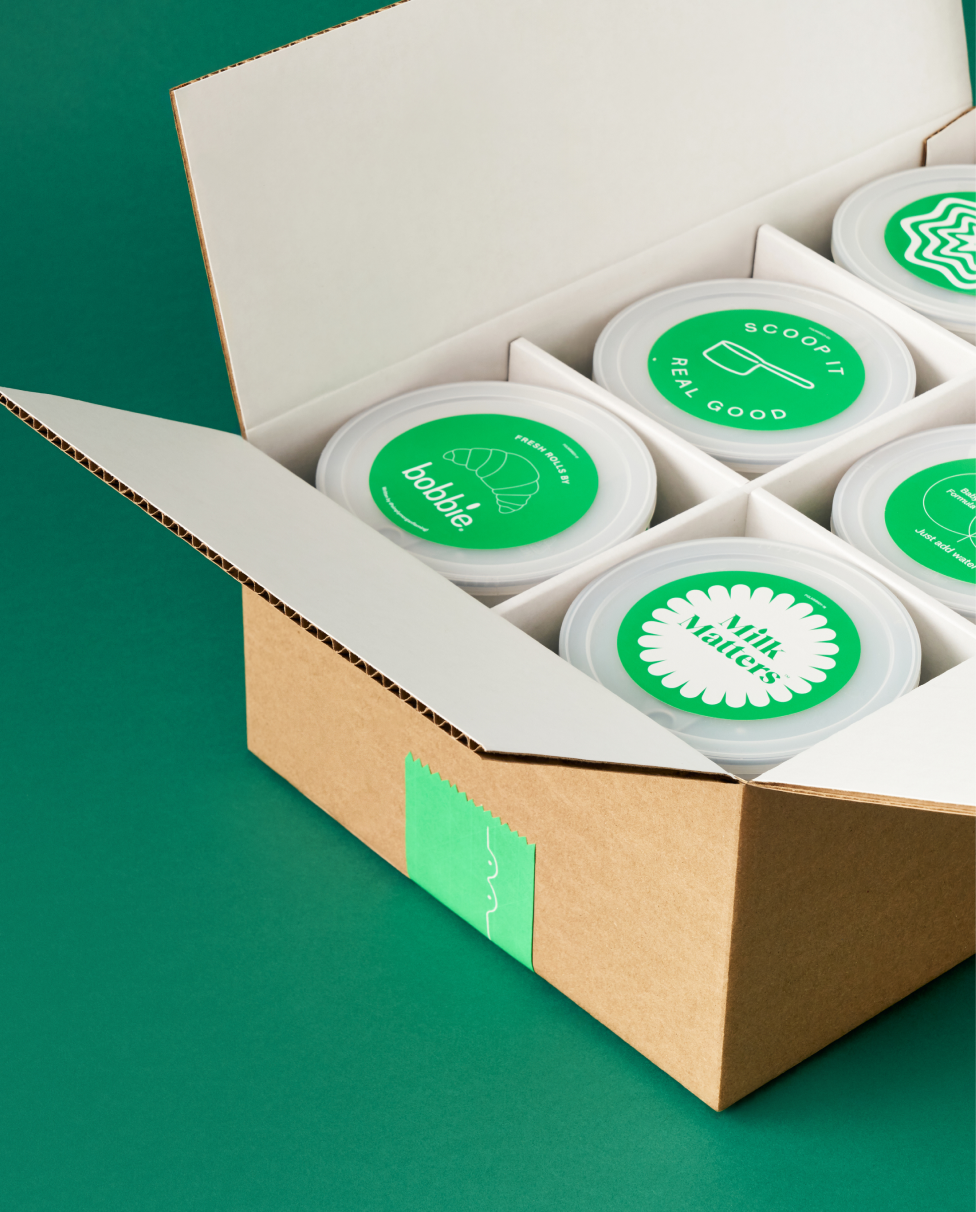

Combo-Feeding: A Comprehensive Guide for Parents

What is Combo Feeding?
Combo feeding (AKA combination feeding, mixed feeding, or supplementing) is when you feed both breast milk and infant formula. It's a way of introducing formula to a breastfed baby with the goal of continually providing both breast milk and formula for baby's nutrition. But to put it simply, combo feeding combines breastfeeding and formula feeding, to offer a baby both breast and bottle (or bottle and bottle, if the parent prefers to give expressed milk and baby formula). Combo feeding also celebrates your best, by rejecting the idea that feeding your baby looks like exclusively breastfeeding or formula feeding.
At Bobbie, we want parents to embrace the idea that you can do (and even love!) both. That’s why we bring you the resources to make the right choice for your baby, from education to community support. By joining Bobbie, we guarantee you every last drop of formula you’ll need for your baby’s first year, however you choose to feed.
There’s no wrong way to feed.
Nursing day
and night
Lotsa breast milk,
lil formula
Going
halfsies
Mostly formula,
some breast milk
All formula, all
the time
Try The Formulator
Bobbie is nourishing babies across the U.S. Tell us how you're feeding your baby, and we'll recommend a subscription size.
Benefits of
Combo Feeding
You might be interested in combo feeding for any number of reasons… Or no special reason at all! You shouldn’t feel the need to justify why you use a mixed feeding method. Even so, here are a few common reasons why parents may find themselves wanting or needing to introduce a bottle of formula (or many) to their baby’s diet:
While pumping protections at work have improved in recent years, it can still be very difficult for some parents to pump at work. Additionally, some women don’t respond to a pump as effectively as they do with their baby, resulting in less milk output than their baby typically drinks. Combo feeding provides working parents the opportunity to supplement their expressed milk, or to skip pumping on the job entirely.
Exclusive breastfeeding is time-consuming, and unfortunately it’s a task that cannot be delegated to a non-lactating parent. Some families combo feed because it allows both parents to share the experience (and the responsibility!) of feeding, and provides another avenue for bonding for a non-lactating parent.
An unfortunate reality. The stress some women have about producing enough milk further reduces their ability to produce. High cortisol levels have been shown to impact prolactin levels, and prolactin levels must remain high to produce breast milk! Adding formula to your baby’s diet may help reduce stress for some families, making the feeding experience more enjoyable overall.
Some families choose to combo feed because they want some benefit of formula while also maintaining the experience of nursing and the positive associations that come with it. Combo feeding can allow parents to cover an infant’s nutrition needs with formula while still meeting their needs for closeness and bonding through time on the breast.




Tips for Successful
Combo Feeding and Maintaining Milk Supply
Parents who plan to combo feed should know that reducing their daily number of nursing or pumping sessions can have an effect on their milk supply. Milk production works on a supply and demand model, meaning the production of breast milk correlates to how much and how often milk is removed from the breast. If less milk is removed each day, the mother’s body will assume that less milk is needed and production may drop. But it’s not a zero-sum game: working with a lactation consultant can help you create a plan to maintain a full milk supply while adding infant formula to your baby’s diet.
Some parents may worry that if they start bottle feeding, even on a part-time basis, their baby will no longer be interested in nursing. This concern is often due to fear of “nipple confusion” – a term that describes the experience of a baby not knowing what to do with the breast after being fed with (or pacified by!) a silicone nipple. The good news? Research shows that nipple confusion is not a real thing! Many parents bottle feed and nurse successfully for weeks or months without issue.

“Combo feeding works because it permits families autonomy. Raising a child has its challenges but how you choose to feed your child should not be one of them.”
DR. RÉGINE BRIOCHÉ MD FAAP
How to Start
Combo Feeding
The thought of offering a bottle to your exclusively breastfed baby might feel intimidating at first! It can be overwhelming trying to learn a new feeding method. Here are some tips to get started:
- Read the preparation instructions on the formula container thoroughly. It’s best to do this ahead of time—don’t wait to wait until 2am with a crying baby to read the fine print!
- Offer a bottle of formula in the morning when baby is most hungry.
- Have someone other than the nursing parent offer the bottle. Sometimes it helps if mom is out of sight!
- Use responsive feeding techniques to mimic the experience of feeding at the breast.
- Watch for any signs or symptoms of intolerance, keeping in mind that some digestive changes are normal during the transition period.
- Pay attention to food safety rules for infant formula storage, as these differ from what you may be used to with breast milk!
Want to learn more? Bobbie U has tons of great resources, including information on introducing a bottle to a breastfed baby!
I Combo Feed Because…
We asked our Bobbie community to share why they chose to combo feed their infants. Some of their answers may surprise you; others may sound very familiar. Join the conversation and share your own combo-feeding story by tagging us @bobbie on Instagram!


How to Create a
Combo Feeding Schedule
There is no “right” or “wrong” way to combo feed, and there’s no one-size-fits-all combo feeding schedule! Some parents nurse several times a day and use formula at night, while other parents send formula to daycare and exclusively breastfeed overnight. Some parents combine expressed milk in the same bottle as prepared formula, while others alternate breast milk feeds with formula feeds throughout the day. Some families may continue to nurse, largely for comfort, only once or twice a day while providing the bulk of their baby’s nutrition from formula. Others may pump almost exclusively, and add in a single formula bottle each day so they can skip the day’s last pumping session.
Combo feeding can look like whatever you want it to look like, and the schedule or framework that supports your family’s needs will be specific to you. Start by identifying your goals, and work backwards from there to find a schedule that aligns. Reach out to a lactation consultant, if you’re interested in the finer points of combination feeding. Breastmilk in any quantity can be beneficial, and it helps to get a second opinion.
Remember: you can’t mess this up! As long as you’re feeding, your best is best.
When you subscribe to us, we subscribe to you.
From the moment you join Bobbie, we set aside all the
formula your baby will need until their first birthday.
















